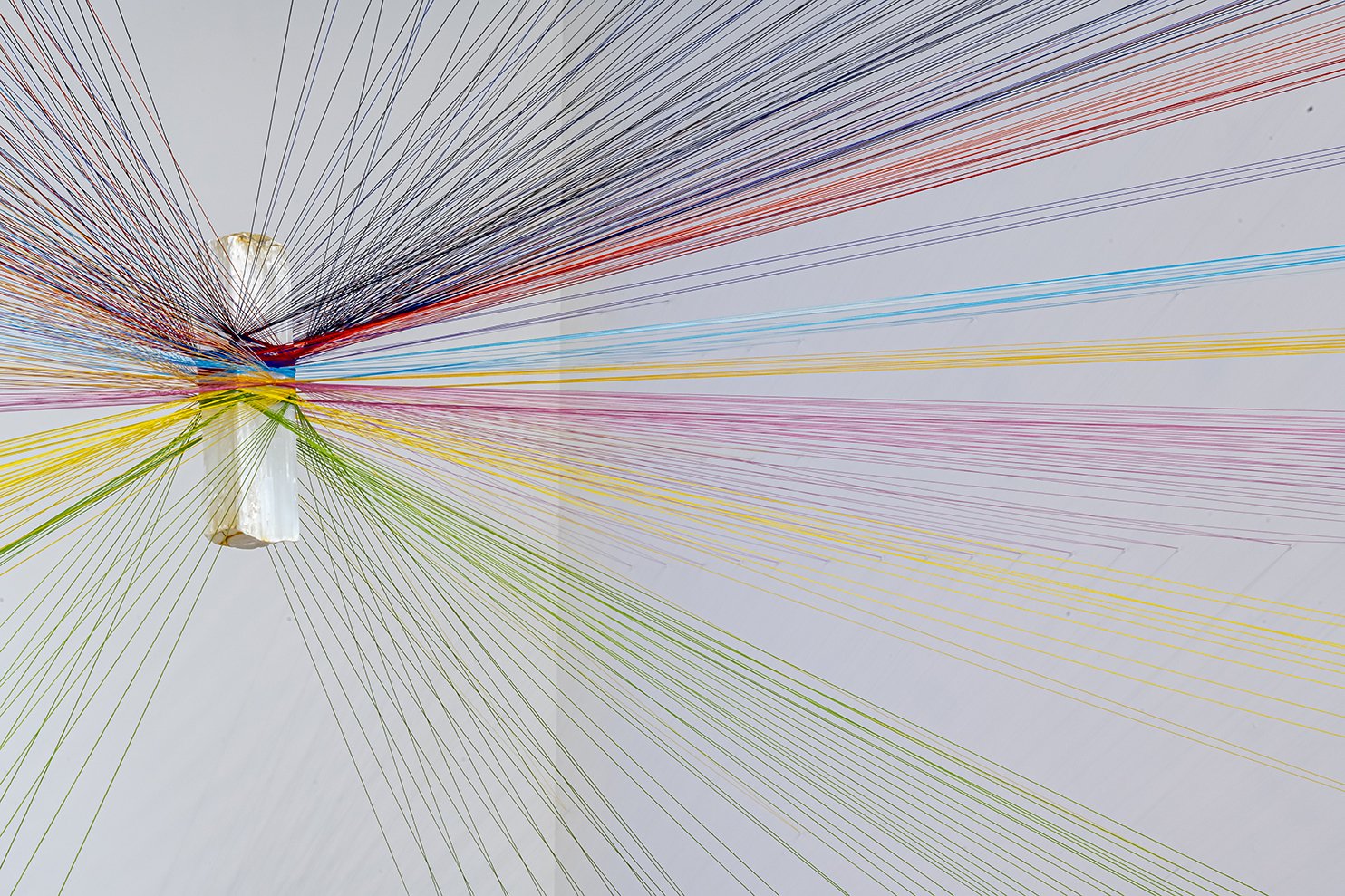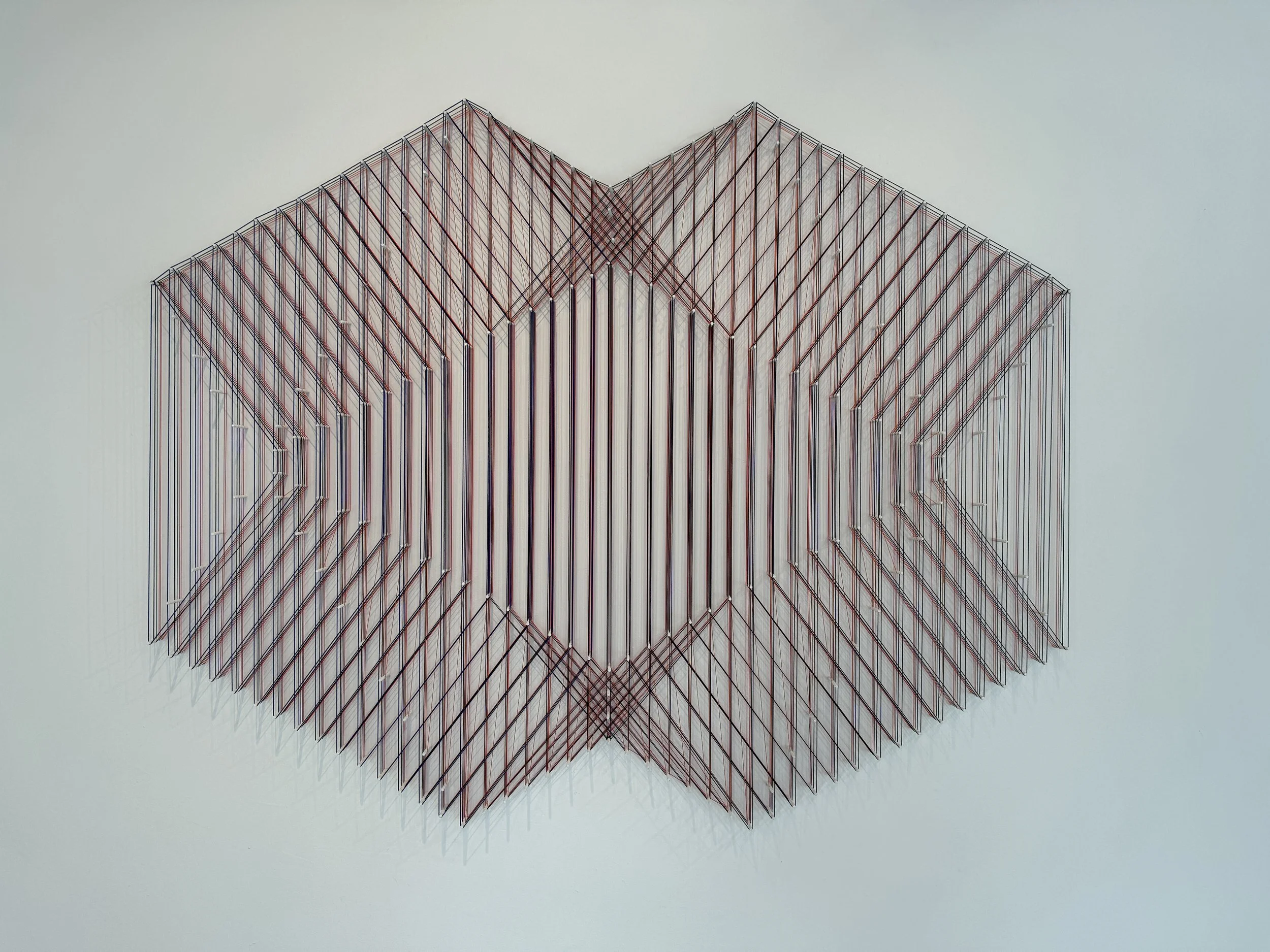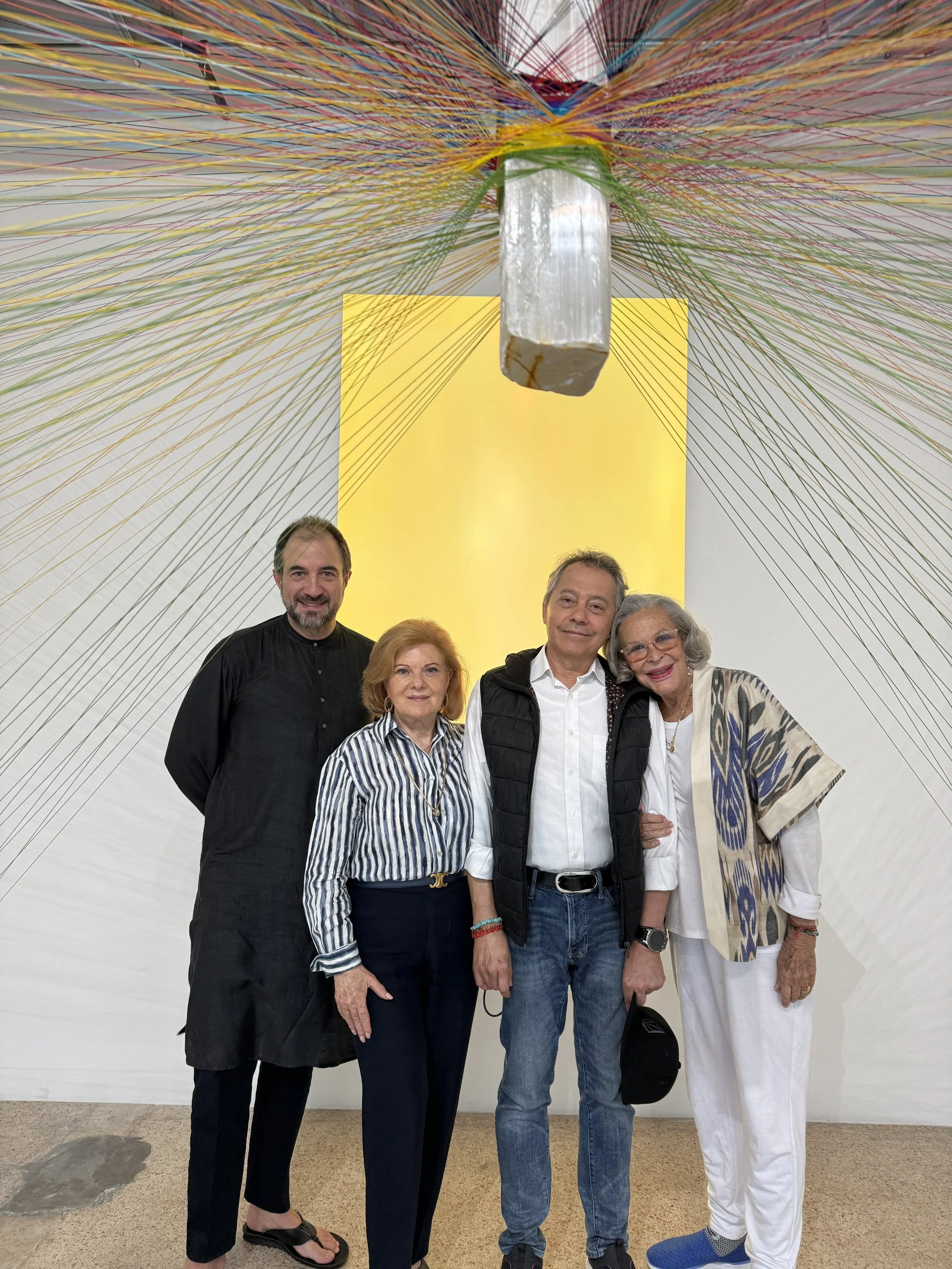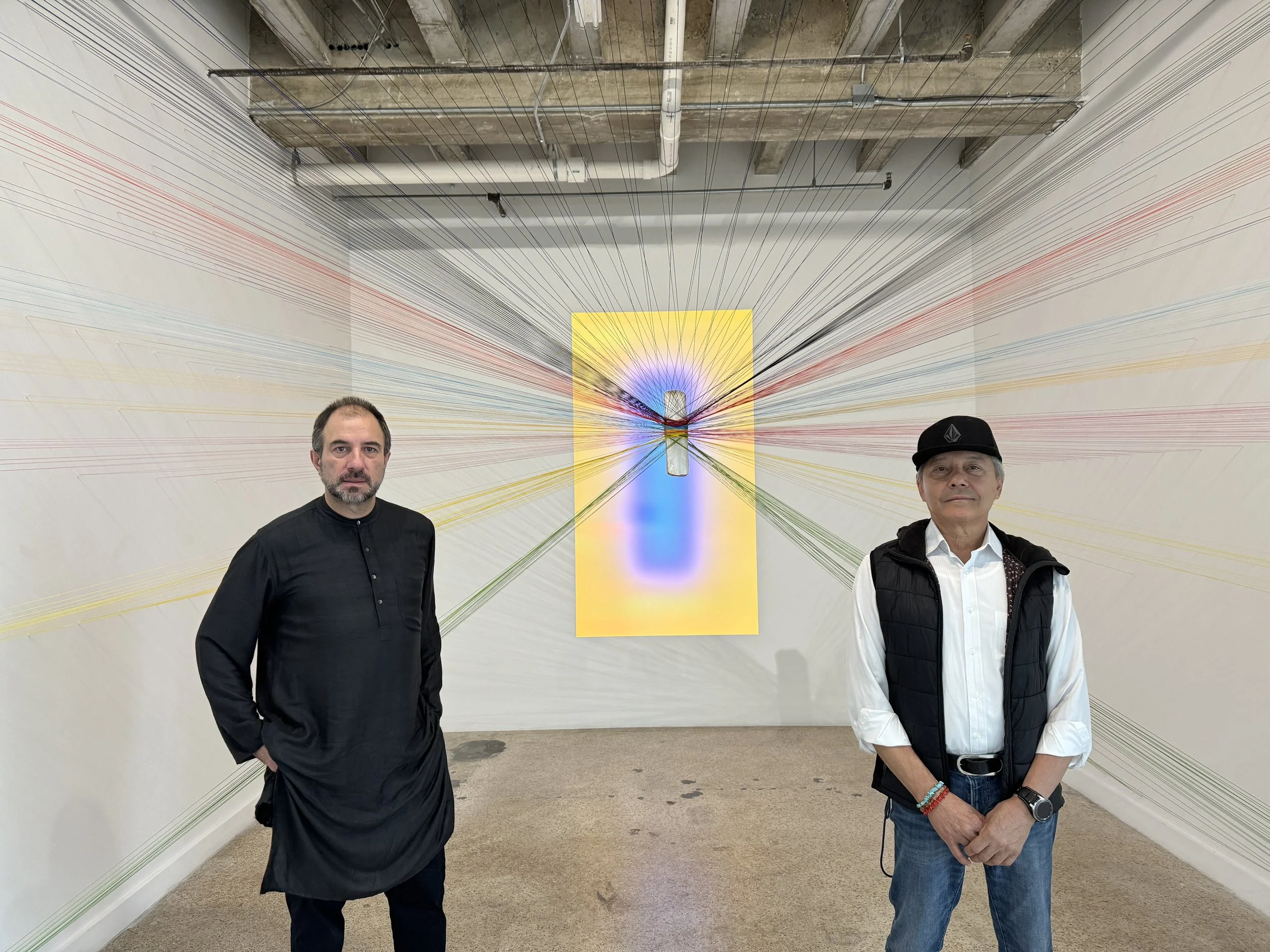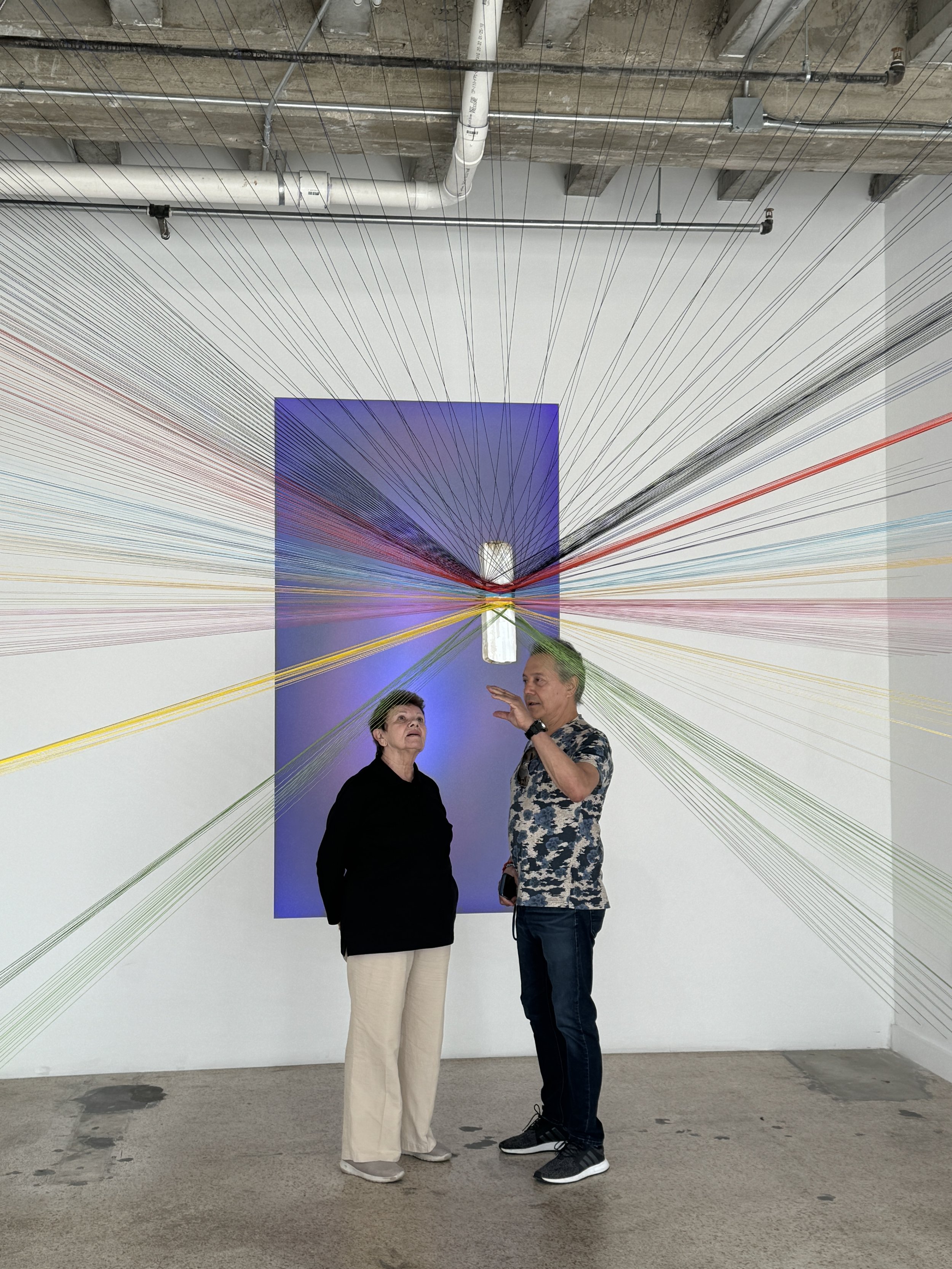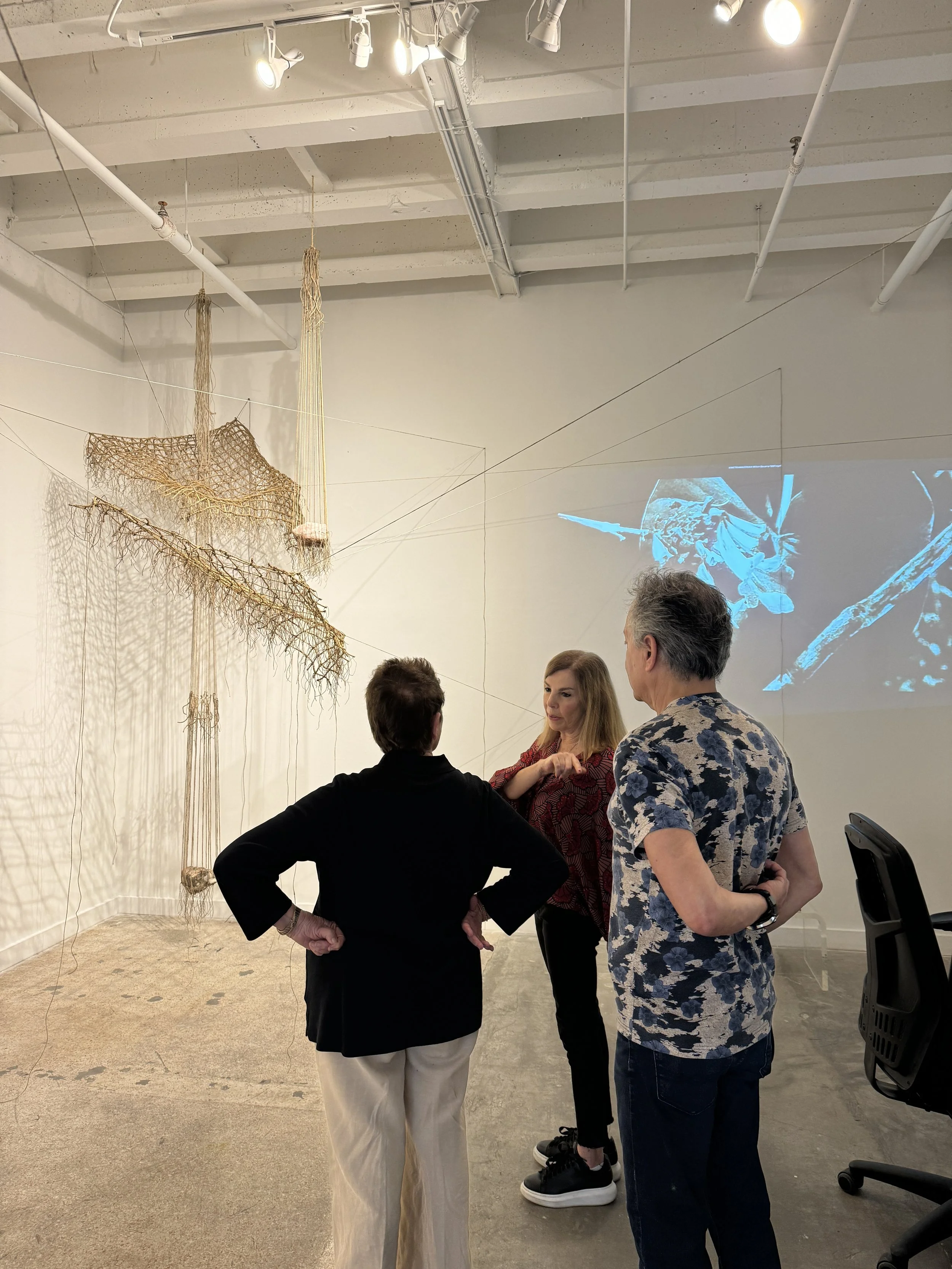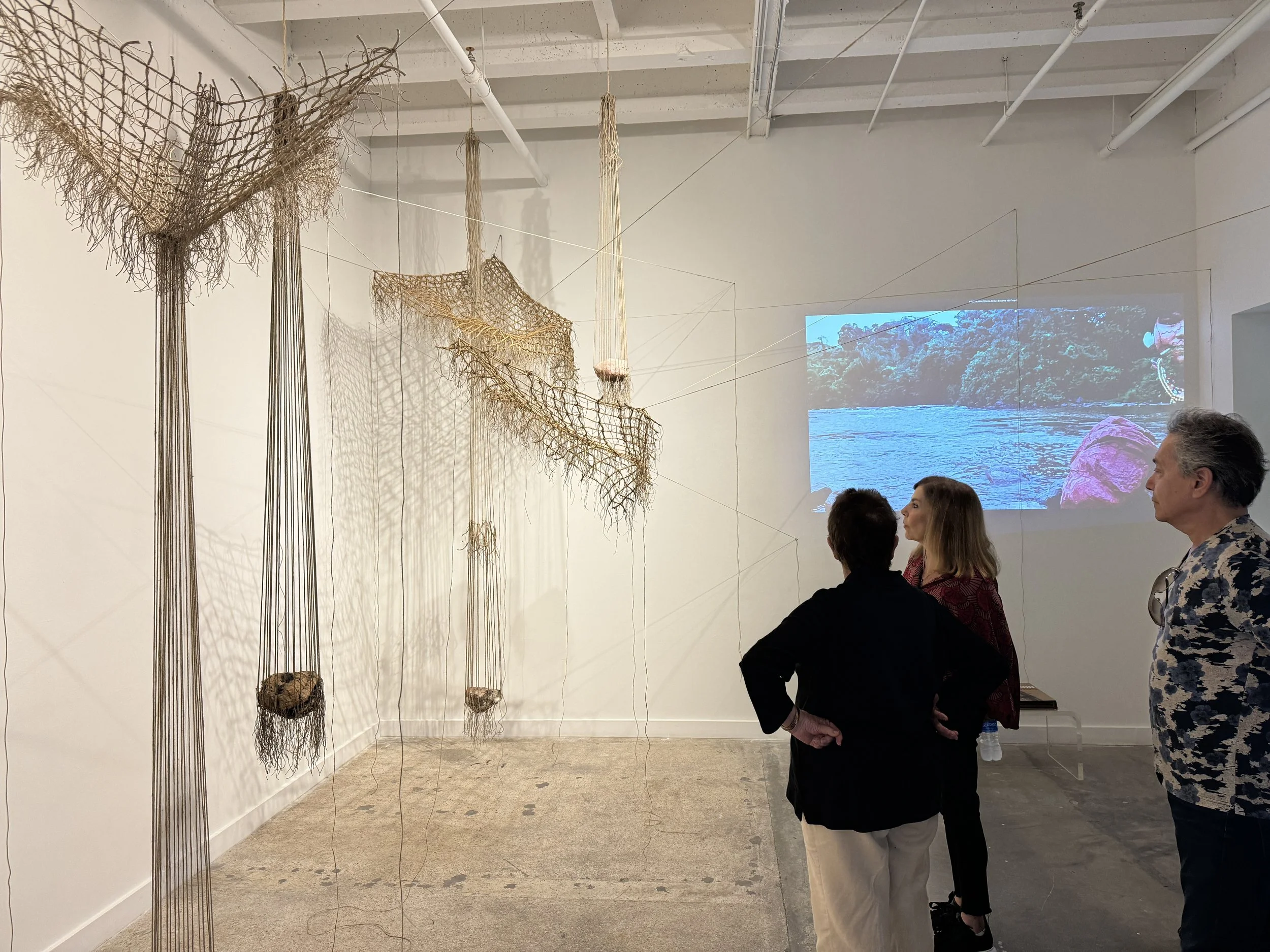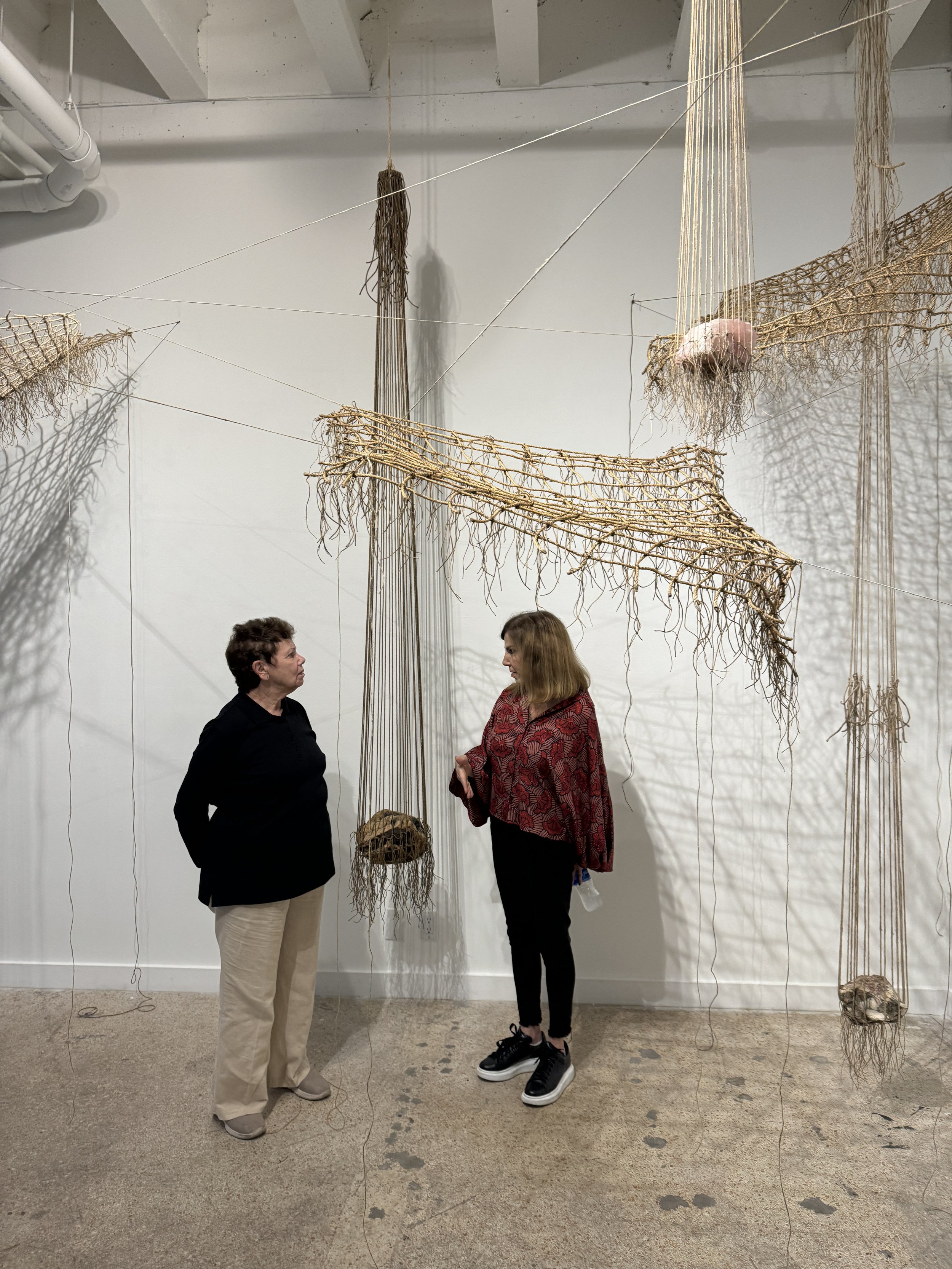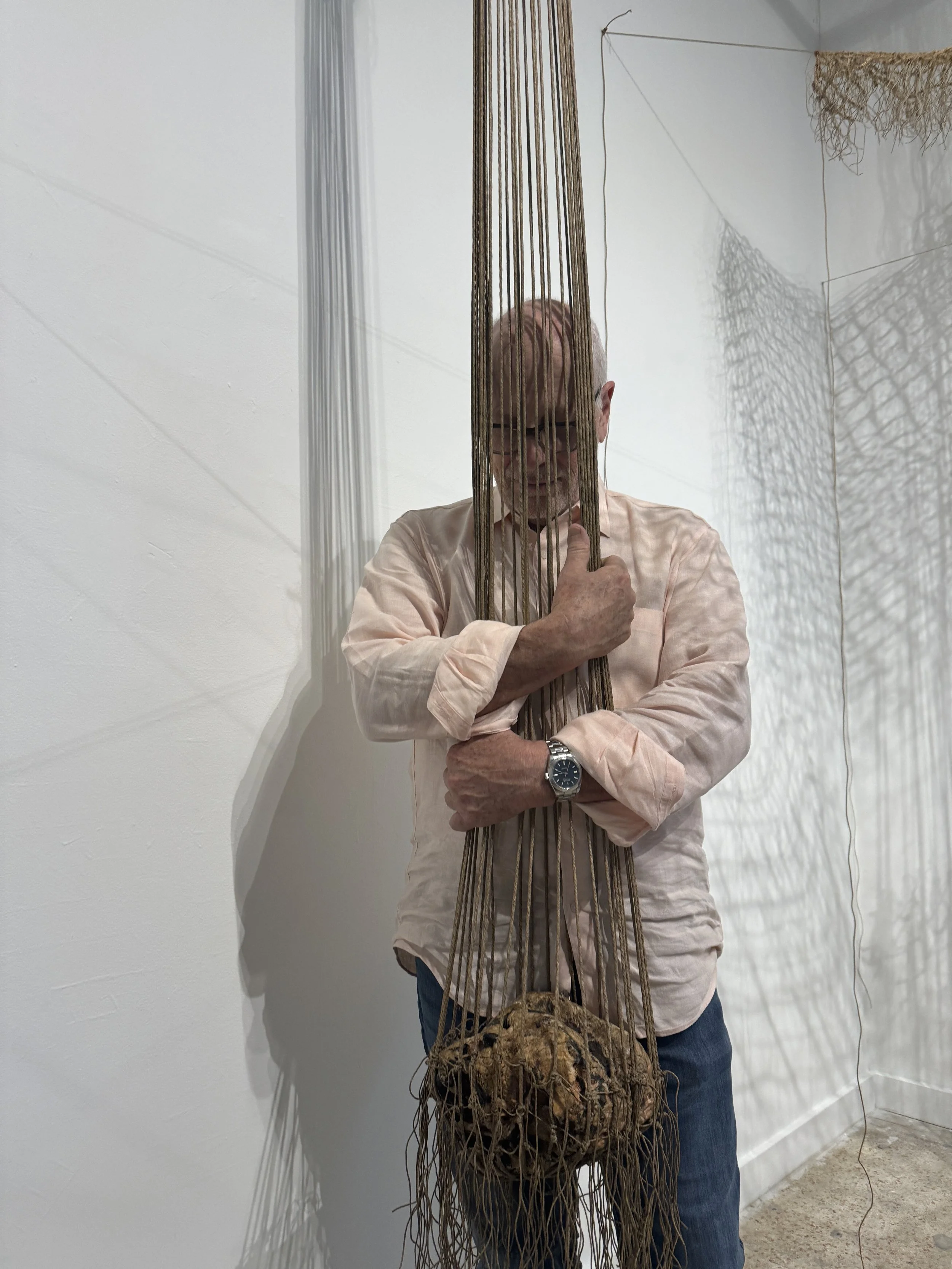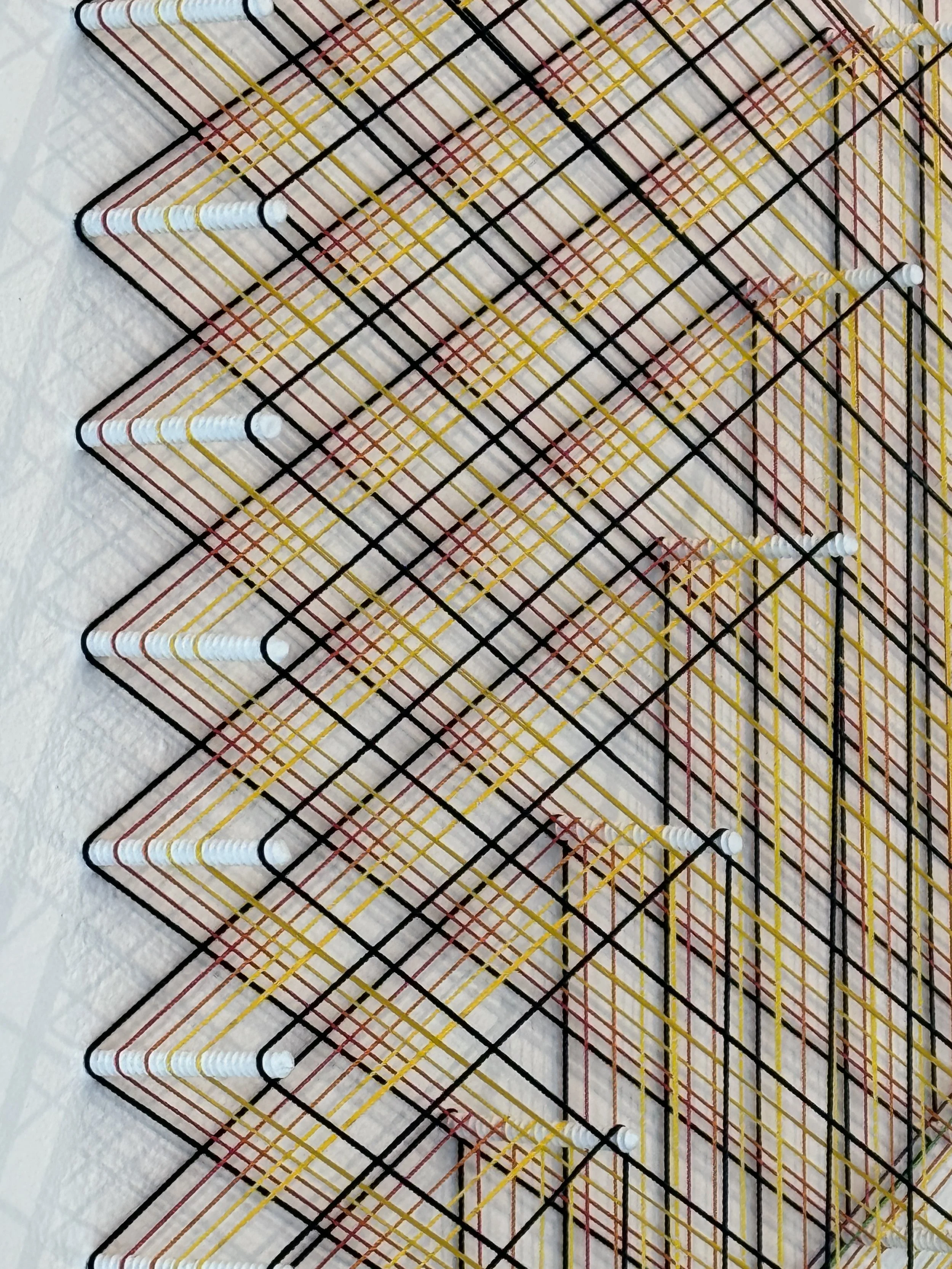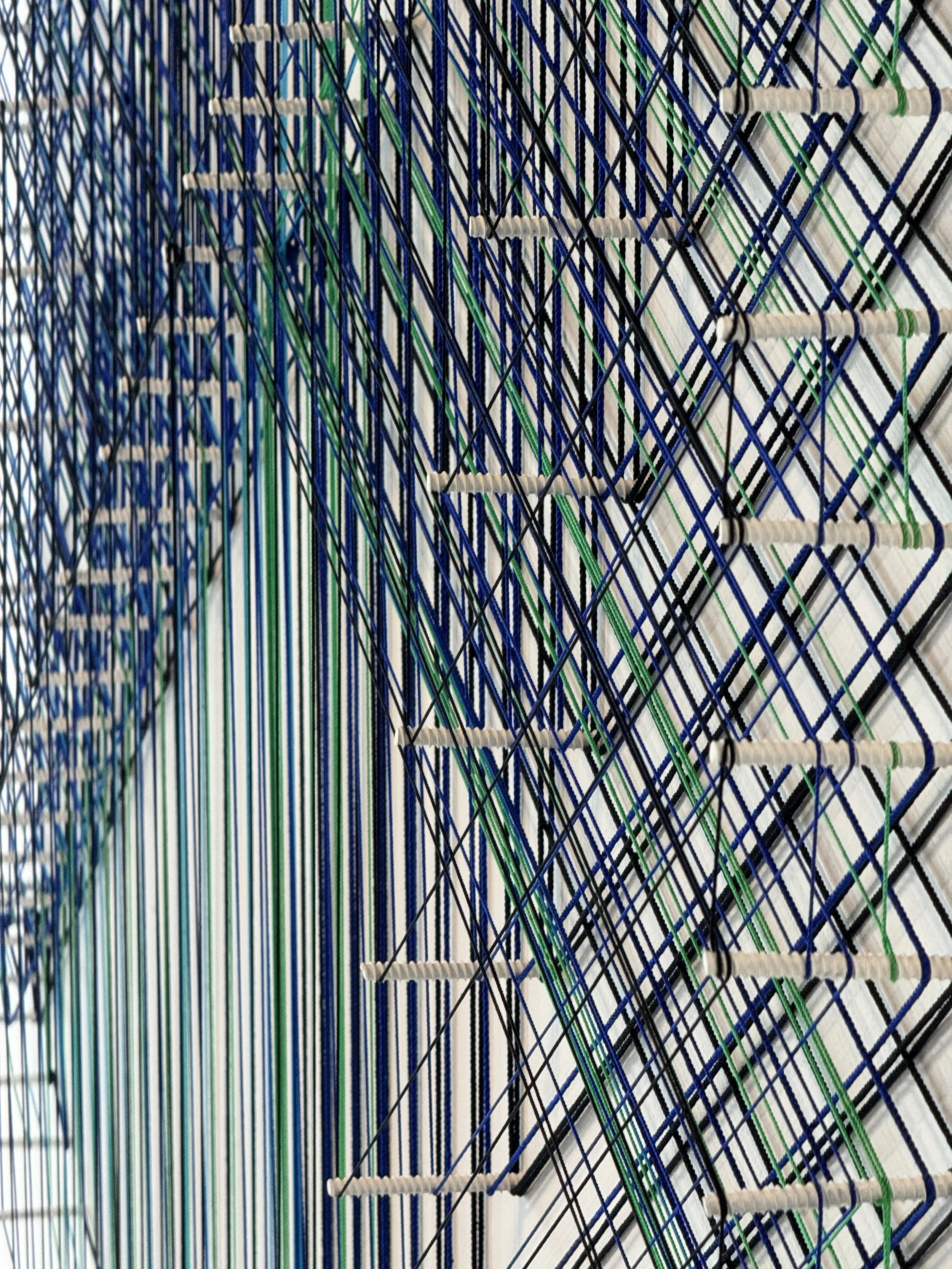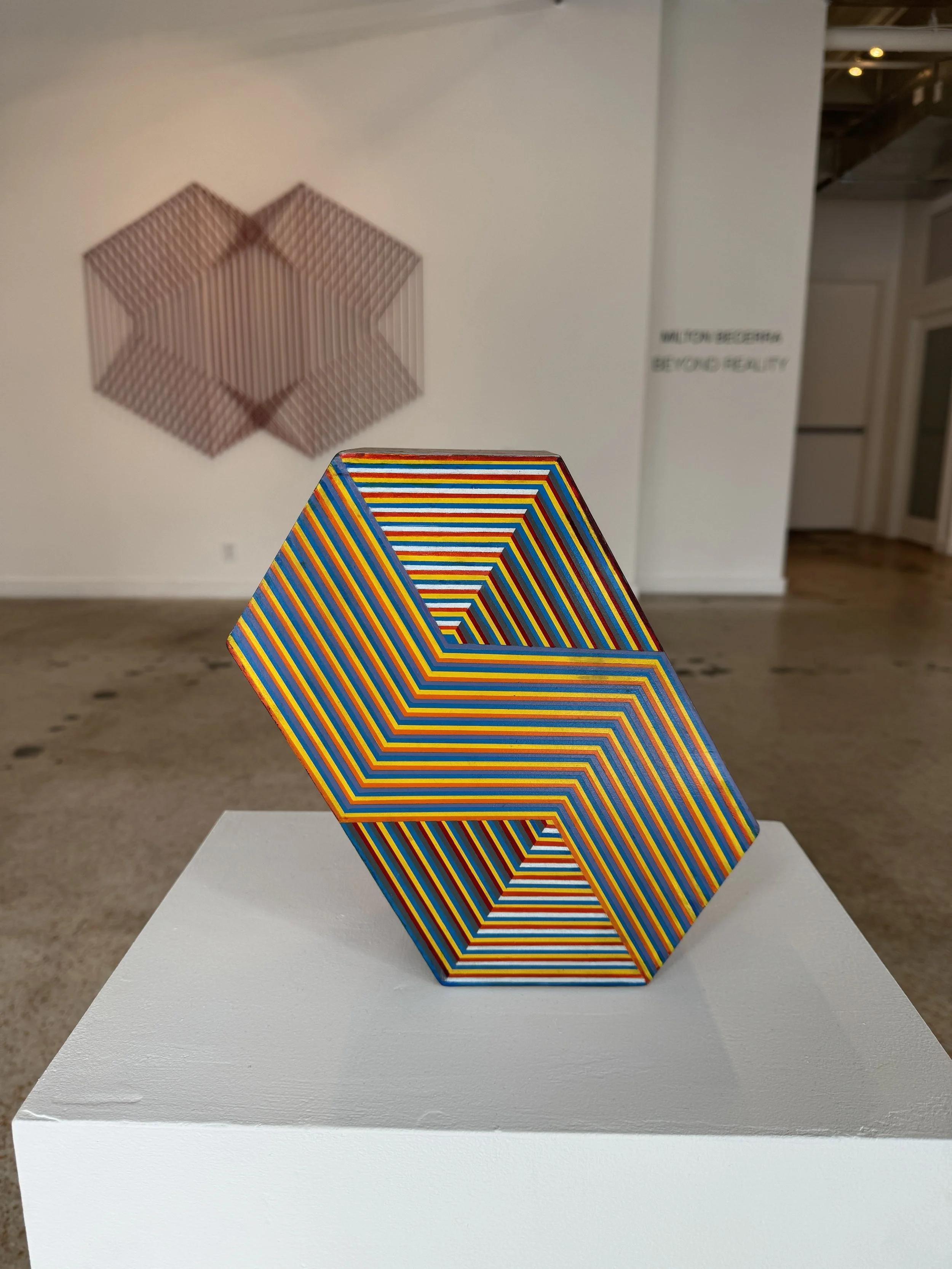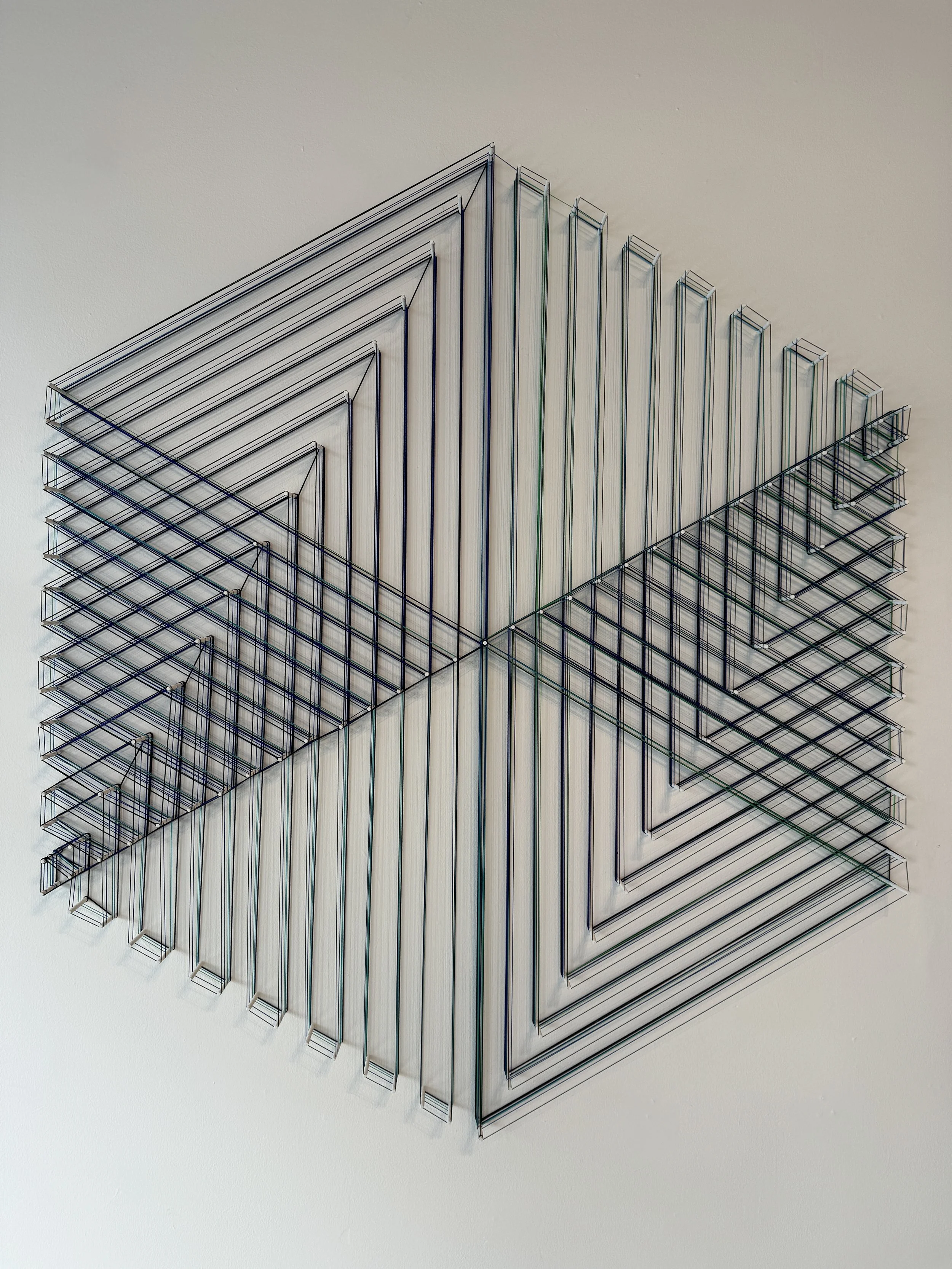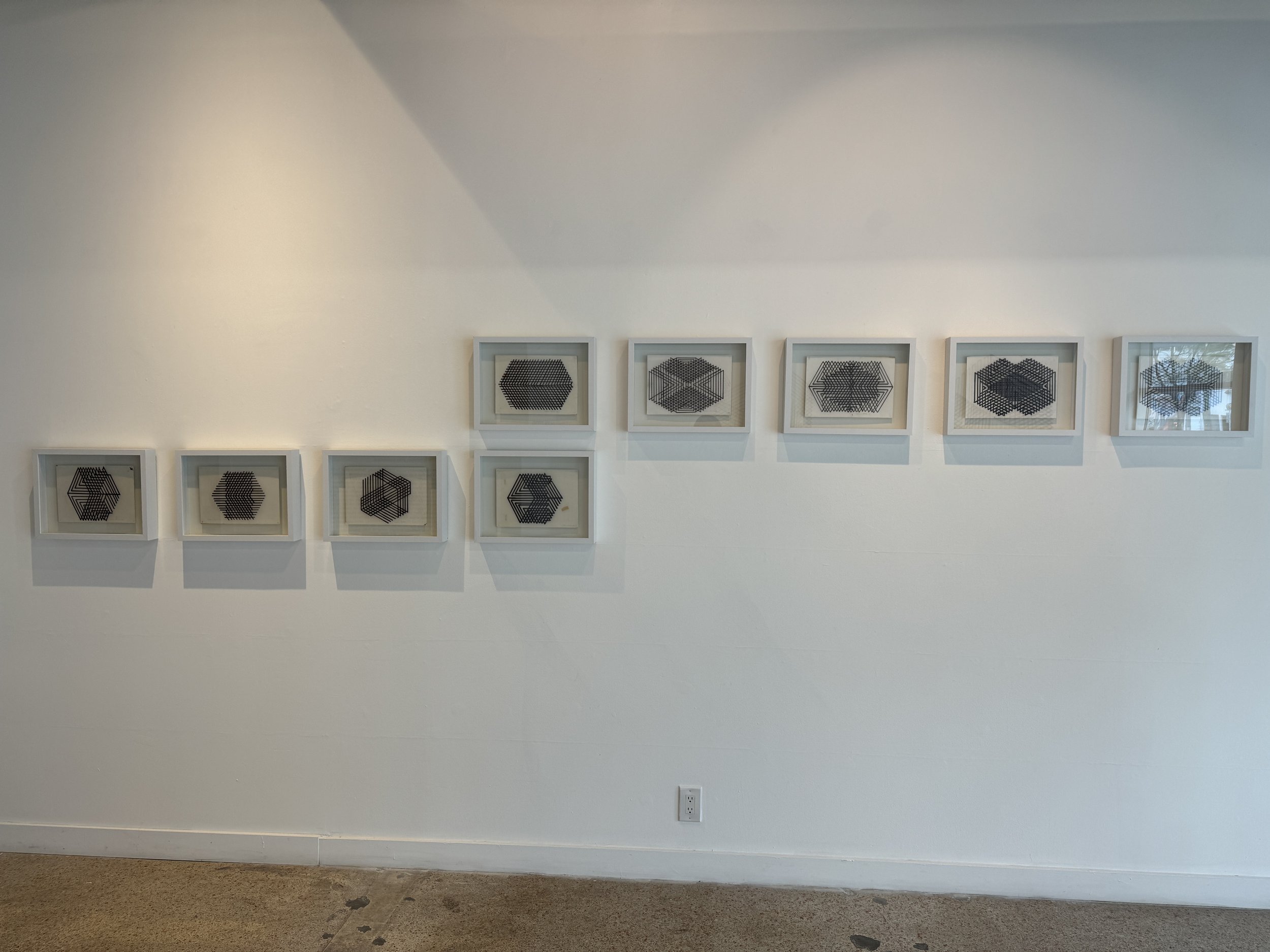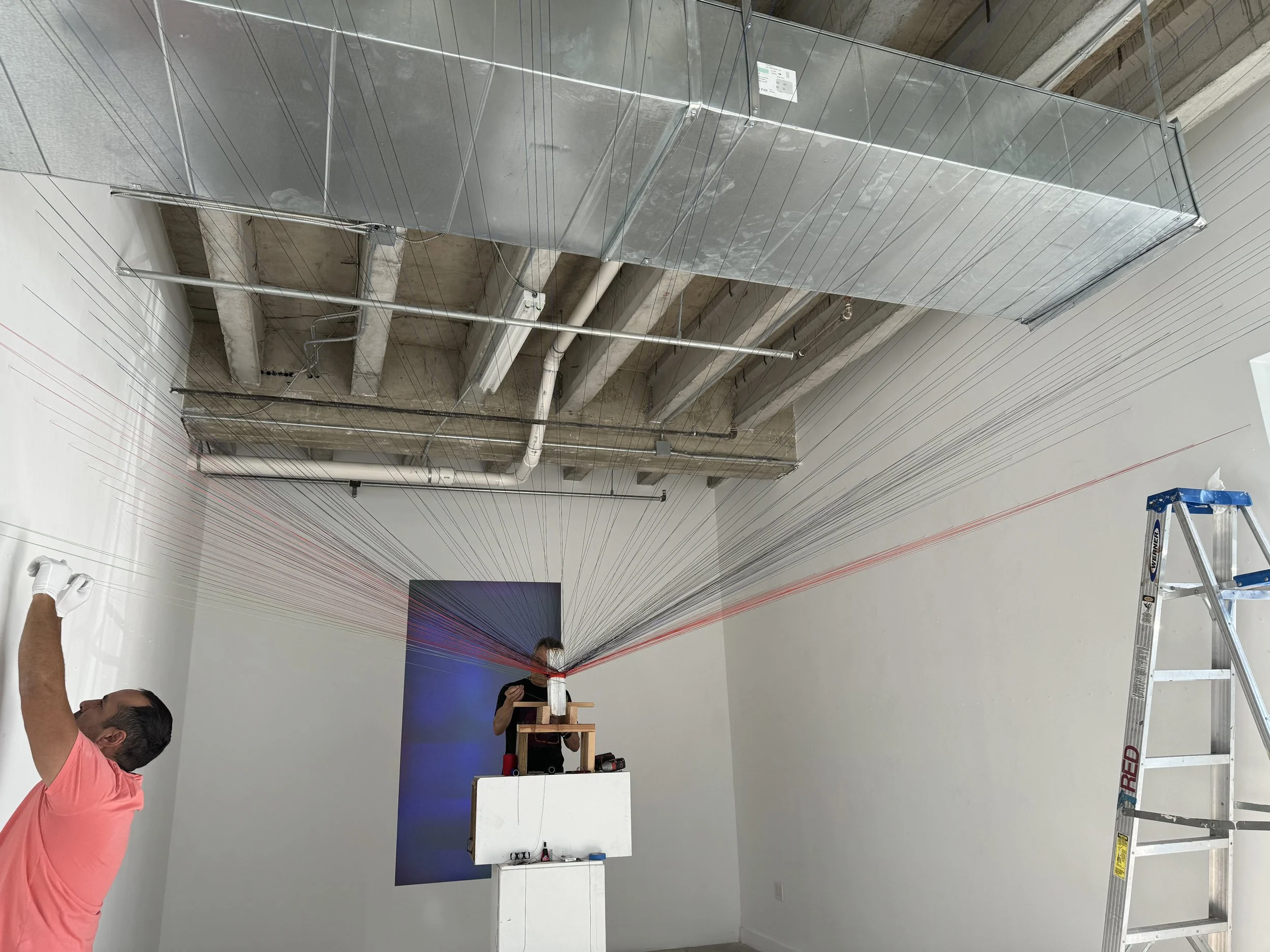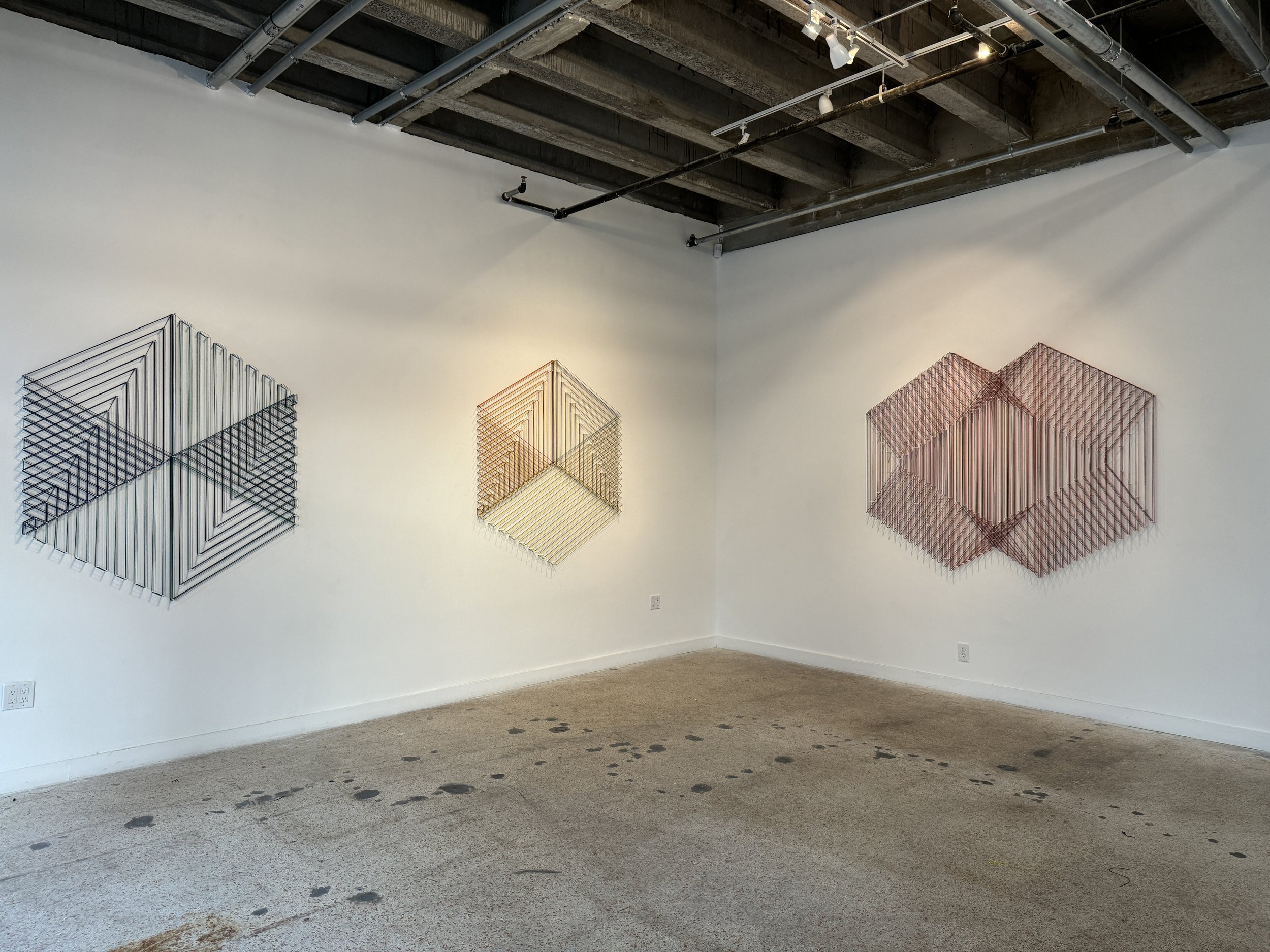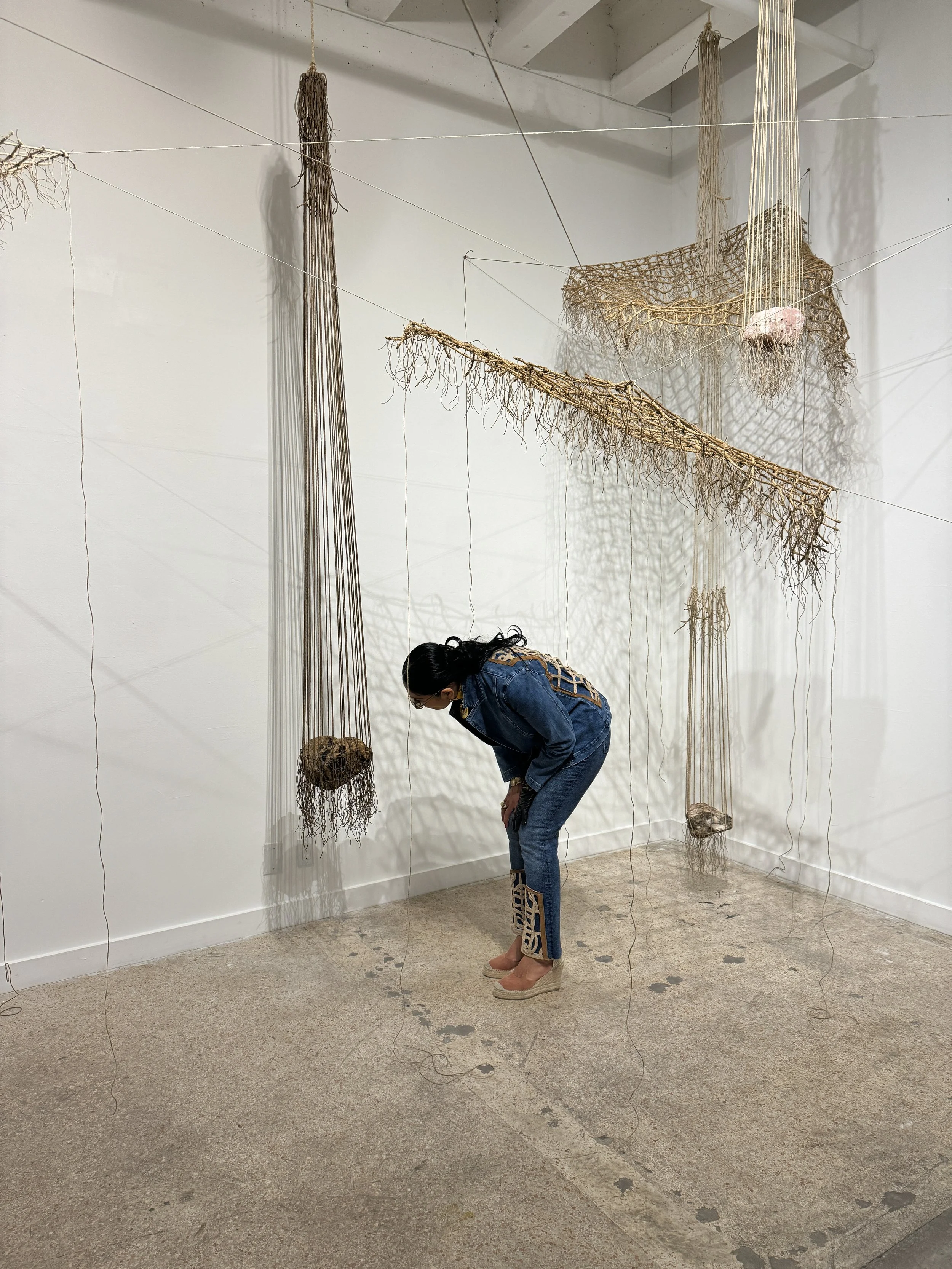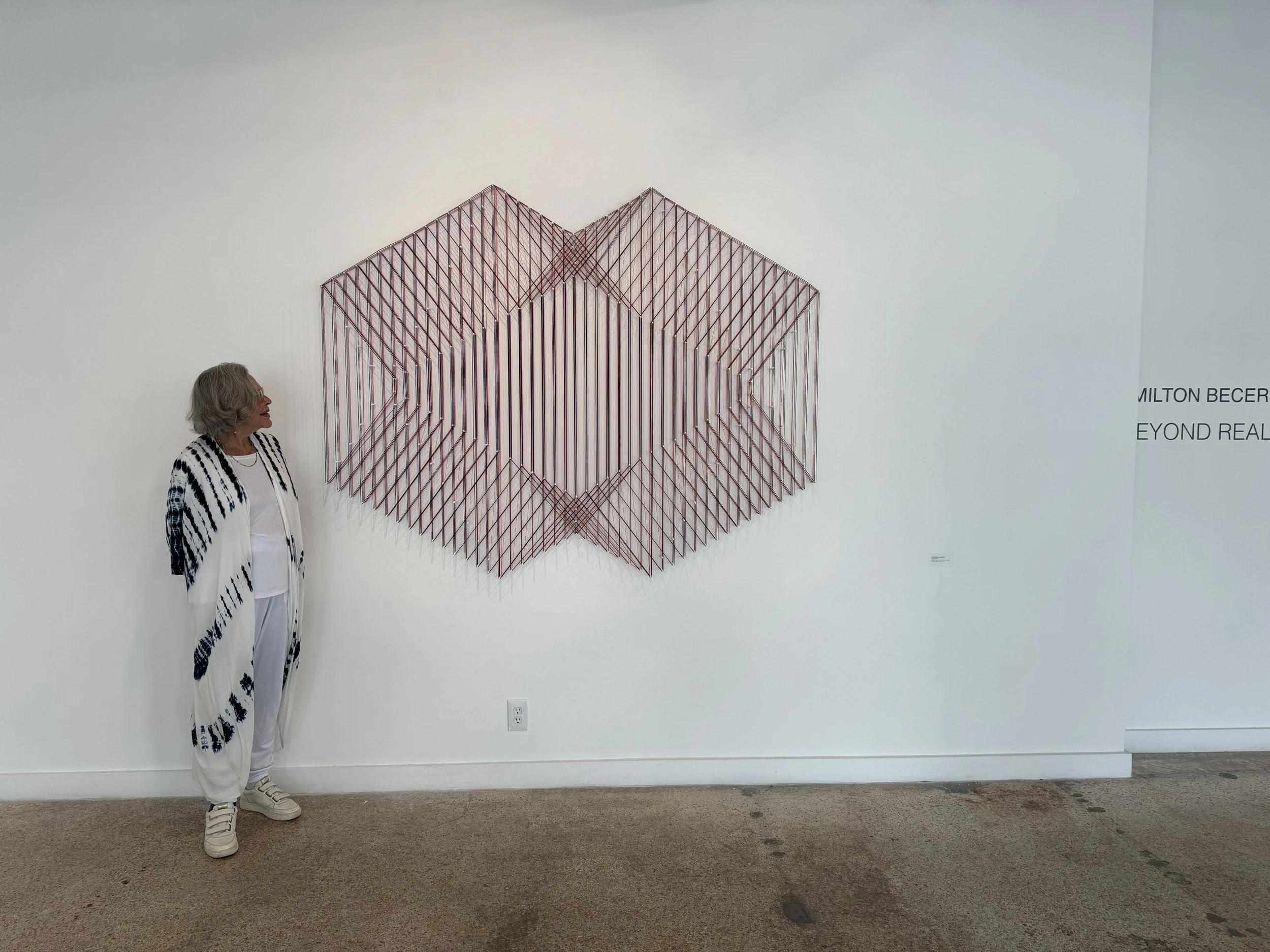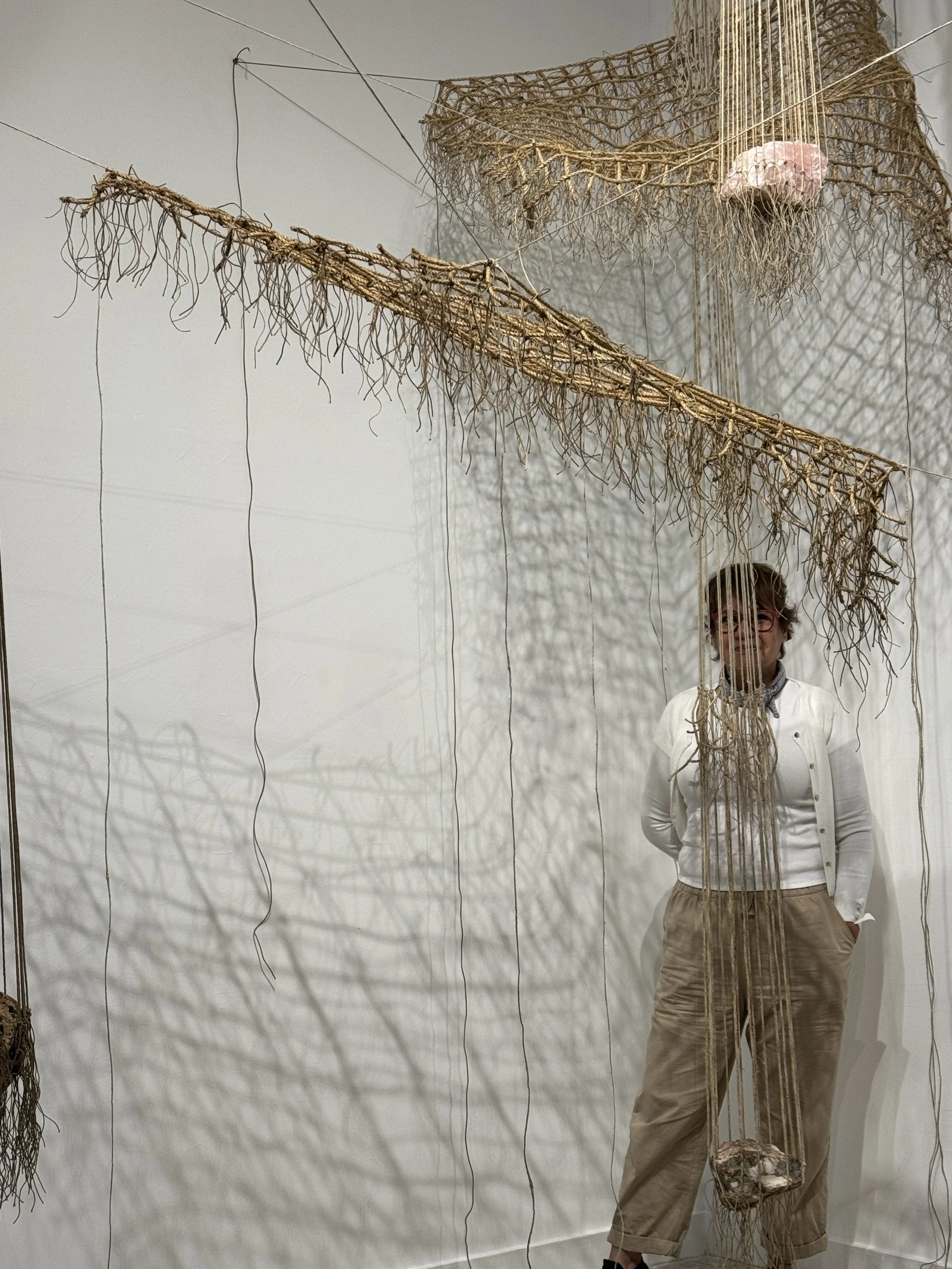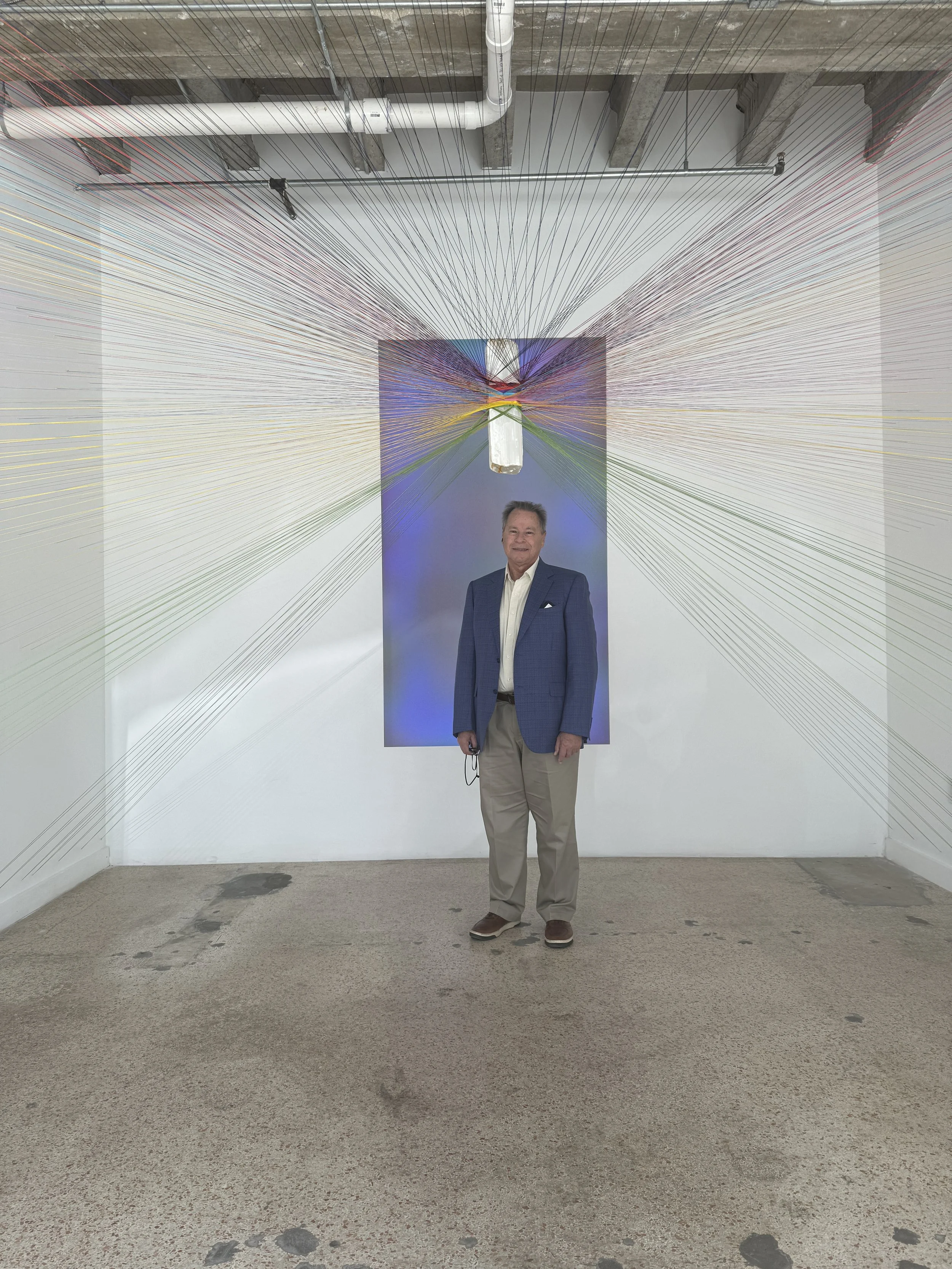BEYOND REALITY
Milton Becerra
December 7, 2023 to March 22, 2024
META Miami and Henrique Faria New York are pleased to present Beyond Reality by Milton Becerra
In truth, the creation of the world always begins again,
Edouard Glissant.
META Miami and Henrique Faria Fine Art are pleased to present BEYOND REALITY, Milton Becerra’s second solo exhibition in Miami. The exhibition combines a site-specific installation, three-dimensional works, ink on papers from the 70s, a photograph, and a sculpture.
Milton Becerra, The materializer and the conceptualizer
In truth, the creation of the world always begins again,
Edouard Glissant.
It was in 1985 that I invited Milton Becerra, a young Venezuelan artist who had recently arrived in France for the XI Youth Biennale (1980), to participate in a documentary, “From reality to magic, 21 artists from Latin America in Paris,” which I co-produced with a Brazilian journalist on the artists of this continent – among the most influential of the time – residing in the French capital. It brought together several generations, including Julio Le Parc, Antonio Seguí, Fernando Botero, Luis Caballero, Jack Vanarsky, José Gamarra, Gontran Netto and José Balmes, as well as Eduardo Berroeta, Vivian Scheihing, Saúl Kaminer and Julio Pacheco Rivas; others, requested, but absent from Paris at the time of filming, having been unable to participate in this film. This documentary would be screened in the “Latin America” section that I proposed at the Salon Grands et Jeunes (Grand Palais, 1985), for which I invited the artist to exhibit.
After the glorious years of the end and beginning of the 20th century when many Latin American painters chose Paris to seek out and sometimes adopt the artistic modernity that they could not find in their own countries (the Mexicans José Maria Velasco, Dr Atl, and Diego Rivera, the Uruguayans Pedro Figari and Joaquím Torres Garcia or the Argentinian Emilio Pettoruti, to name just a few, without forgetting that it is in France, a few decades later, that the kinetic movement will take hold), Paris would once again become, during the sixties to eighties, the capital of Latin American art in Europe and attract ever more young artists from the subcontinent. Since the end of the ninth decade, the appeal of Paris has weakened – even if certain Parisian galleries today maintain a sustained interest in a few contemporary artists favorites of fairs and biennales –; the flow of arrivals has dried up, national scenes have developed in countries of origin, the market has consolidated for several Latin American artists in New York and especially Miami, making North America more attractive than Europe for artists from the South.
In the work of Milton Becerra (Táchira 1951), we can first note how his country's most famous artistic heritage, kineticism, permeates to varying degrees the complex universe of lines and elaborations of frames and forms in which geometry and nature merge. In his claimed quest for existential and formal questions, Becerra also strives to define the determining place that mathematical and scientific references have in his thinking. Furthermore, weightlessness, where his desire for space asserts itself, is decisive in his conceptual, artistic, and sensitive approach, crossed by the obsession with time, this “time without duration” of which the writer Philippe Curval speaks. If we look at how the artist imagines his geometry and constructs his own “adventure of lines” (Henry Michaux on Paul Klee), we realize how much this challenge of the void is thought upstream and irrigates a discourse cultural (and aesthetic) imbued with reflection nourished by curiosities and knowledge. For the artist, the link with “nature”, through the mediation of line, is unwavering. In an intervention that invokes tradition or Indigenous memory, at the crossroads of land art and “Arte povera” without claiming to belong to any of these movements – Becerra's approach is thought of in its relationship to man and constantly evokes him in his “inhabited geometry” where stones, ropes, and threads coexist.
His intellectual concerns and investigations in various fields constantly feed a work whose dynamism and renewal, in the logic of a chosen and assumed path, are inscribed in a moving and stable reflection, the permanent axis of its creation. For Jean-Luc Nancy, “art is always cosmogonic”. Becerra does not escape this definition. Suppose we associate his art with this impalpable dimension. In that case, his cosmogony is necessarily plural, discreet, touch of color or timbre, folded mass, radiant, scent, song or not suspended, since it birthing a world (and not building a system). There are always as many worlds as it takes to make a world 2. This is Becerra’s approach which is based in the art of a permanently regenerated memory.
Milton Becerra sees geometry as one of the determining factors of his art. For him, it is inseparable from nature with which he has a close relationship. In his constructions, the frequency of the circle and the spiral is the foundation of his own "geometry" which, without being a reiteration of his first kinetic influences, abandoned very early - when Jesus Soto and Carlos Cruz-Diez were his masters -, pays homage to pre-Columbian art. It is not possible to preserve a memory if we cannot find it in the legacies left to us by our ancestors (...). What interests me is sacred geometry, how life is formed, and how we can see around us that everything has a structure, mathematical, geometric 3. Becerra summarizes here, in a few words, the essence of the aesthetic and existential thought that has inhabited him since his beginnings in Venezuela - his choice of a different and personal way of "making art" as he says - even -, and which will flourish upon its arrival in France.
By never ceasing to think and be the landscape, the human being that Becerra is first and foremost, but also the artist, defines himself as one with his territory and nature, thus affirming his authentic relationship with the ecology, a sign of its deep identity. We find this powerful and determining link between territory and identity among certain Mexican artists, including those from Oaxaca, particularly Rufino Tamayo and Francisco Toledo. From the 1970s, his “Hexagonometries” in the pure wake of kineticism, were followed by his first urban interventions in the surroundings of Caracas (destructions and natural environments) where the influences of Gordon Matta Clark were perceived and his first concerns were expressed. On the environment and its concerns about ecology. It was also during these years that he initiated photography, the practice of collages and photomontage, such as those of “rocas pintadas” (painted rocks), “arte corporal” (body art) with exposure of his own body and the “piedras atadas” (attached rocks). We remember at the end of the 70s - beginning of the 80s, the interventions made in nature by another Latin American artist, the Cuban Ana Mendieta, who also sought a matrixial, erotic fusion with the earth in an intertwining, between feminist posture and a quest for an identity.
Paris will be the trigger for Milton Becerra's interest in the pre-Columbian cultures of Latin America; his work, “mysterious and ritualistic, outside of time” according to Pierre Restany, will initiate a major turning point where experiences linked to shamanism, fetishism, magic, ancestral rituals and spirituality will strengthen it, and enrich it while making it stand out a little more each time. What interests the artist is transformation, and mutation. The suspensions of ropes and stones, the use of wax, metals, semi-precious stones, inlaid wood, then bamboo, skin, flint... will gradually confirm the references to local Indian historical traditions and the importance of the ceremonial in his work. To seek the “anima”, the sacred, is to recreate a space of mystical essence for him to find a relationship with what is lost. Weaving is, perhaps, for him, the ancestral way of connecting with the earth.
Knots and links, tensions of ropes and threads, are like initiatory paths that forge roots from birth to death and anchor Becerra in a threatened territory.
Because acculturation and the disappearance of indigenous populations is a real subject in many Latin American countries. On the sustainability of this notion of connection to the land so deeply alive on the continent and the permanence of cultural identity, Virginia Pérez-Ratton, regarding Becerra, underlined how (he) confronts creation, that is to say, as a way of exercising respect towards the environment from another perspective, from patience and the slowness of weaving as a possibility of survival.5
From his Parisian studio, Becerra does not dream of a mythical, frozen, and watered-down Latin America. His commitment is far from being purely theoretical since he will live for several years between Paris and the Venezuelan forest, where he will return several times to work. It will intervene in several territories, settle on the banks of the Orinoco River (1992), and share the daily life of the Yanomami Indians (1997), in Brazil and Venezuela. In this timeless retreat, he will find himself, recharge his batteries, and be able to open up to substance at philosophical, sensitive, and aesthetic, which constantly nourishes his creation. There, he will enjoy, in silence, reflection, and sharing a stopped and active time; he will immerse himself there and give himself over to the immanence of the rite to constantly reweave his link with life. A convinced ecologist, one of his main concerns is the future of still preserved but threatened nature and the Indigenous communities, denouncing the harm that various pollution inflicts on it. His commitment in situ did not prevent him from participating in numerous international exhibitions, the first individual took place in Paris in 1983 at the Espace Latin-Americain. He was present in several Biennales, Sao Paulo in 1985 (he represented Venezuela) and in 1992; in Havana in 1994, and in Caracas, that of El Barro de América in 1995. He produced numerous exhibitions, including that of the Chacao Cultural Foundation in Caracas in 2007, to name just a few; it was recently represented by a huge installation at the Sydney Biennale (March-June 2022) and at the House of Latin America, “l’Outreligne”, in 2023.
One of the characteristics of the multiform art, for some unclassifiable, of Becerra (Gustavo Guerrero), is to experiment with techniques, materials, spaces, and cultures; it is mixing times, moving from the ancestral to the contemporary, from the conceptual to the material, without ever losing sight of its primary objective of being “a perpetual observer” of nature, a witness and a transmitter of transformation, “ of what is linked to the body and the mind” and which establishes its belonging to the territory. Becerra declared in 1996 the memory of a moment that anticipates the future it is the rhythm that moves us in the silence of creation. The artist has tied in his constructive imagination, a vital and dynamic network where the echo of origins rebounds on that of speculations of the future; beyond geography, beyond nature, beyond matter, beyond culture and aesthetics, beyond the sacred and the divine, it offers a “landscape of the sensitive” (Pierre Sansot) in the making and constantly changing.
-Christine Frérot
Translated by MARIA GABRIELA PELAEZ
1 Maria Elena Ramos, « Becerra se nos presenta como un materializador que si conceptualiza y, complementariamente, como un conceptualizador que si encarna », catalogue de l’exposition Cara y sello, Galería Beatriz Gil, Caracas, Venezuela, mai 2014.
2 Jean-Luc Nancy « Tatiana Trouvé », MAMCO, Genève, 2022
3« No es posible tener memoria si no podemos encontrarla en los legados que nos dejaron nuestros antepasados (…). Me interesa un geometria sagrada, como se conforma la vida, como podemos ver que todo alrededor tiene una estructura, matematica, geometrica ». Entrevista CF con Becerra en 2021.
5 Extrait catalogue de l’exposition. Museo de Arte y Diseño Contemporáneo, San José, Costa Rica, 1995.

